Canada to capture influx of foreign investment
March 11 2014
A firm fiscal footing is attracting foreign investors to Canada’s hotel real estate market.
By Alam Pirani (ISHC)
HNN columnist
Canada is recognized as a safe place for foreign investment, aided by an efficient tax system, economic stability, as well as relatively few regulatory, cultural and geopolitical barriers compared to other peer nations.
The country’s healthy fiscal position is strengthened by its banking sector —ranked the soundest globally for the sixth consecutive year in 2013 by the World Economic Forum—and consistent economic growth that has contributed to a favorable investment climate, exhibited by an AAA international credit rating by Moody’s Investors Services since 2002.
While Canada and the United States mirror each other on several levels, Canada historically has been more fiscally conservative, which garnered global acclaim throughout the last downturn. The Canadian hotel real estate market benefitted from a relatively limited distressed market peaking at just 12% of volume in 2010 as reported by Colliers International Hotels, compared with a peak of 45% in the United States in 2010, according to Real Capital Analytics. Distressed transactions in Canada continue to decline, reaching 3% of volume in 2013 compared with 18% in the United States, according to Colliers International Hotels.
Source: Colliers International Hotels, Real Capital Analytics
The Canadian commercial real estate market historically has been “pint size” compared to other global markets such as the United States. However, overall cross-border investment into Canada is strong and growing.
Nordstrom have entered the market, while established retailers such as Walmart are expanding. These deals, among others, are driving increased foreign direct investment into Canada.
In 2013, outbound retail deal activity reached $1.3 billion with an average deal size of $263 million, as reported by PricewaterhouseCoopers in a recent report titled “US retail and consumer deals and insights: 2013 year in review and 2014 outlook.” Growth opportunities alongside a weaker Canadian dollar forecast to slip from near parity, which was common between 2011 and 2013, to $0.90 (U.S./CAD) has resulted in a favorable cross-border investment climate across asset classes.
The Canadian hotel real estate market?continues to advance in the current cycle?with more than CA$2 billion in volume?occurring in 2013, according to Colliers?International Hotels, representing about?8% of the U.S. market volume, which Real?Capital Analytics estimates at $26 billion.?Traditionally, cross-border investors have been focused on larger hotel deals more than $40 million in deal size with top-tier international brands situated in major Canadian cities.
In 2013, the Canadian market saw six single asset transactions and three portfolio deals that crossed this threshold, as presented in Table 1. While representing a small component of what has occurred State side, there are strategic opportunities abound and worth a look as the market continues to improve.
During 2011 and 2012, institutional quality select-service assets were a major component of the Canadian market, representing 22% of volume in this period, according to Colliers International Hotels. In 2013, the market demonstrated strength in the full-service segment, which almost doubled year over year, while other segments remained fluid.
This growth was led by rarely offered city-center assets in major urban centers, such as the 2,925-room Canadian Westin Portfolio that sold in September 2013 to an affiliate of the Starwood Capital Group for $765 million.
Another offering attracting a variety of global interest was the 429-room Fairmont Chateau Laurier, which sold in October 2013 for $120 million as well as the 575-room Courtyard by Marriott Toronto Downtown, which sold for $76 million in May 2013.
The Canadian cycle
Situated in the middle stages, the Canadian hotel cycle began its upturn in mid-2011. The increased availability and sale of significant urban assets should entice increased foreign interest as we continue to progress through the cycle.
The inflow of cross-border capital is being further elevated by market dynamics south of the border where the major players are bidding up aggressively assets in urban centers and secondary markets, leaving a large segment of buyers priced out in many circumstances.
This is demonstrated in recent data from Real Capital Analytics, which reported in 2013 that full-service assets in gateway cities traded at near or higher than peak levels. Portfolio transactions also increased 30% year over year, reaching the highest volume since cyclical highs in 2007.
These market dynamics make looking for hotel acquisitions in Canada an attractive option in the pursuit of higher yields. This was evident in 2013 where significant transactions were pursued by a mix of U.S., Asian, European and Middle Eastern capital. As the availability of strategic product and sizable portfolio deals become available, Canada will continue to see an influx of foreign investors who will be aggressive bidders.
Alam Pirani leads the Canadian hotel brokerage and advisory team as executive managing director at Colliers International Hotels. He can be reached at +1 416-643-3414 or alam.pirani@colliers.com.

